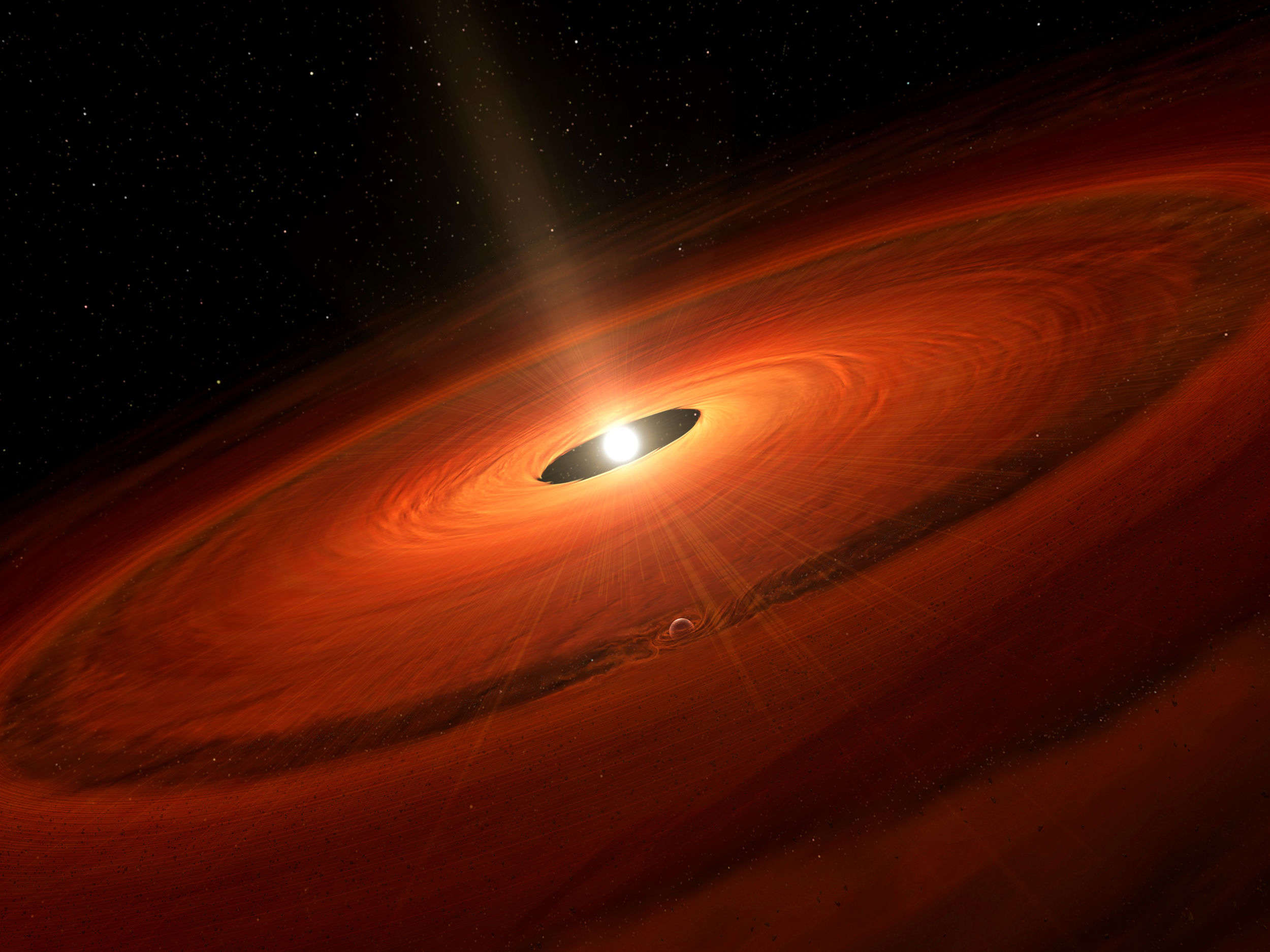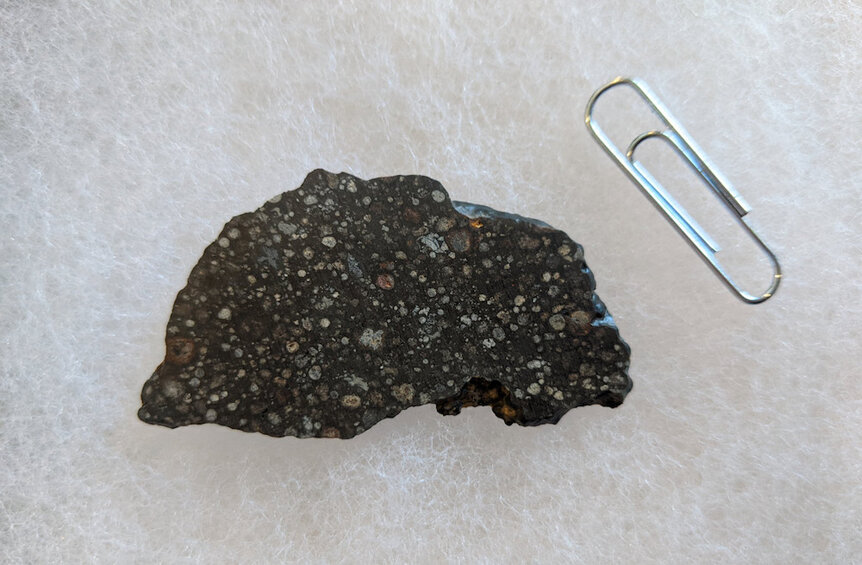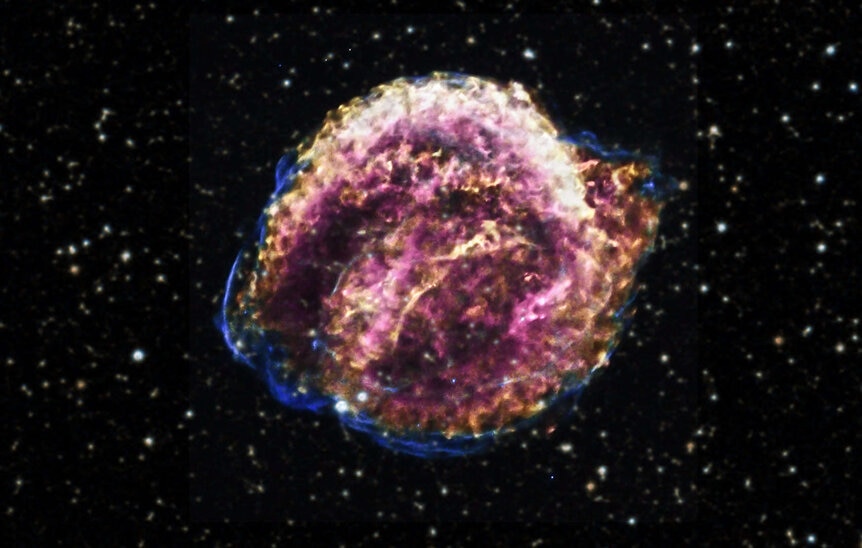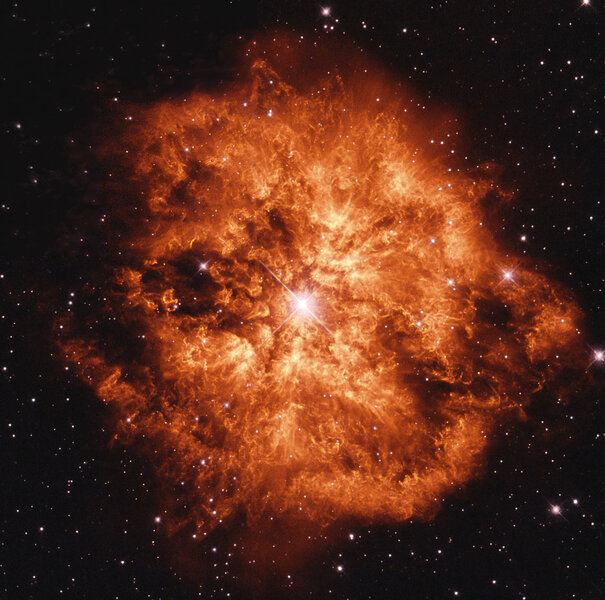Create a free profile to get unlimited access to exclusive videos, sweepstakes, and more!
What kickstarted the birth of our solar system?
Ancient meteorites give clues to what event caused the birth of our solar system.

We know that the solar system formed from a collapsing cloud of cold gas and dust, called the protosolar molecular cloud, what was likely part of a much larger nebula. That’s been a working hypothesis for a long time, but over the past few decades we’ve actually seen many such collapsing clouds in nearby star-forming nebulae.
We still have lots of questions about the process, but two big nagging questions remain: What started our collapse, and how long did it take?
The popular idea in media is that a nearby massive star exploded, and the wave of material slamming into our protosolar cloud compressed it enough that its own gravity took over, collapsing it. But there are other ways this could’ve happened. There’s a type of terrifyingly luminous massive star called a Wolf-Rayet star, and these blow a strong and extremely rapid wind of gas outward. Such a wind could also have triggered the collapse. Even a lower mass star in its dying asymptotic red giant phase could blow a wind sufficiently strong to do the deed.
How can we distinguish between them? Meteorites.
Well, some meteorites, specifically ones that have what are called calcium-aluminum-rich inclusions, or CAIs, in them. These are little nodules of minerals, usually just a few millimeters across, that are unusually high in amounts of these two elements. Given their characteristics, they are some of the very first minerals to have formed in the solar system, sticking together around the same time the cloud itself was done collapsing. These form so quickly in fact that scientists consider the moment they formed to be the same as the moment the solar system itself formed.
The key here is that these elements were delivered by whatever kind of event collapsed our protosolar cloud. CAIs in meteorites are time capsules showing us what kickstarted our very genesis.
Importantly, their ages can be found using radioactive dating, for example looking at the ratio of uranium to lead. This sort of dating gets an age of 4.567 billion years, which is then how old the solar system itself is.
But it gets better. There are radioactive isotopes of both calcium and aluminum, called calcium-41 (or Ca-41) and aluminum-26 (Al-26), which have half-lives of roughly 100,000 and 750,000 years. Ca-41 decays into potassium, and aluminum decays in magnesium. We know that CAIs had both of these isotopes in them when they formed, but long ago decayed into their daughter elements.
Still, the abundances of those daughter elements tells us how much of the parent isotopes were in the CAIs in the first place. And, since the two isotopes decay at different rates, the ratio of the amounts of Ca-41 and Al-26 changed over time.
That’s the key to all this. Both of those isotopes are created in supernovae, Wolf-Rayet stars, and asymptotic red giants, but in different amounts. If we assume that these stars injected the two isotopes into our protosolar cloud and that also triggered its collapse, then by measuring their ratios we can not only determine what kind of event caused our solar system to form, but can also determine how long that process took.
Needless to say, it’s complicated — obviously; just explaining it is complicated and that doesn’t include the complex math and physics. But a team of scientists looked at samples of CAIs from various meteorites, including the famous Allende meteorite, and looked at the ratios of radioactive aluminum and calcium in them to figure out how long it took after the injection of these elements into the cloud for the CAIs to condense out [link to paper].
Those numbers are different for the different triggering event. They found that if a supernova made these elements and seeded our cloud with them, it took about 1.5 million years for the cloud to collapse. However, that number is inconsistent with other the abundance of other elements like iron-60 that a supernova would also fling into our cloud. That doesn’t mean a supernova didn’t do it, but it makes it less likely.
If it was a nearby Wolf-Rayet star it took 600,000 years for the cloud to collapse, and if it were a nearby red giant it would’ve taken more like 0.9 – 1.1 million years. Their findings cannot distinguish between the two, but at least it has narrowed down the culprit.
I’ll note that whatever triggered the collapse was the last event to seed our cloud; there were certainly earlier things like supernovae explosions that loaded us up with iron and other elements. They just didn’t affect the cloud enough to start the solar-system-forming process.
And all this also tells us the solar system’s progenitor cloud collapsed pretty rapidly, somewhere between 600,000 and 1.1 million years. We went from being a nebula to becoming a true solar system in less time than it took evolution to mutate Australopithecus into Homo sapiens. That’s impressive.
One thing I like very much about studies like this is that it puts us in contrast with what we see in the Universe at large. We are a part of the cosmos, both in that we exist in it and we are made of materials from it. We know that stars are forming in other clouds; we see that happening, and we see it in all different stages. Studies like this allow us to plug ourselves into that timeline, and put ourselves among the stars, and see our place with them.





























